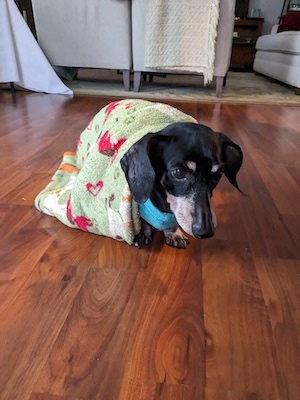Project One
With this first project, I aimed to utilize the HTML and CSS skills I had acquired in recent
lessons and expand my knowledge by applying what I learned to style unique elements of my website.
For example, I wanted to create a two-column layout for my page2.html and page3.html pages, and
because of FreeCodeCamp lessons, I knew that I would likely be able to do that by using CSS Flexbox.
Though I had to look up a tutorial for the CSS, I was proud that I was able to anticipate what CSS
strategy would be useful. Initially, formatting and spacing elements presented a problem, because
I began the project when I didn’t properly understand the CSS Box Model. But through my struggle to
align elements where I wanted them to be, I became more comfortable with the CSS Box Model. I also
worried about making my website meet accessibility standards, but was able to add semantic elements
after doing the Accessibility module in FreeCodeCamp. I am proud of the aesthetics of my website,
especially the borders, font choices, and color choices. I am also proud of how I used CSS classes
to style individual elements to make the pages cohesive, such as the styling I added to my unordered list element.
In the future, I hope to learn more about CSS Flexbox and styling a nav element to look like a proper
header, as well as other strategies to better improve the complexity of my websites.
Project Three
Commerce Site
Content Site
Learning Wordpress showed me that every mode of website development has its pros and cons.
While it's extremely user-friendly, as someone who had gotten used to the extensive, inherent
customization of Bootstrap, I found myself frustrated at times because I couldn't easily
access the elements I wanted to change. As a whole, however, the process was much faster
and less stressful than building a website from scratch, so I can see why people like it.
I was able to use previous skills, such as google's Dev Tools, to target CSS classes to
customize the Wordpress themes. For the commerce site, I used the WooCommerce and Google
Fonts plugins with the Shoppable Fashion. For the content site, I used the theme
Newsmark. For the content site, I focused on creating a dynamic website for book news,
and used custom CSS to change the theme's colors and created a suggested content section
based on categories. For the commerce site, I used a plug-in to customize the font, a widget
to create the footer, and imported a video. In the future, I would like to explore plug-ins
to add more custom elements to my sites.
Final Project
For my final project, I decided I wanted to create an official website for a club I founded last year.
As our membership has grown, I felt there was a need for an official online landing spot where potential
members and collaborators could learn more about our organization and get in touch. So, I made a website
that captures the essence of our club and our mission, while simultaneously making it serve as a launching
point for further community outreach and collaboration.
Though I had used Wordpress before with previous Web Dev projects, I took a much more in-depth approach
to this final project. I wanted to approach it with the mindset of a freelance designer, rather than just
a student making a website for their club. I tried to think of what the website needed more objectively
by looking at other club’s websites to get a feel for what to include, then studied my own club’s aesthetic,
design, and goals to create something that was truly unique and best suited our needs as an Undergraduate
club.
I spent an extensive amount of time choosing and customizing a template. I chose a template with very basic
features so that I could add extensive custom CSS styles to all elements of the page. I changed fonts,
margins, buttons, and more to create a custom style and layout that suited the club. I wanted to create
a look that felt modern to suit the young members of the club, but grounded in the classics the members
of the club study, so I included a blend of classical art with more modern fonts.
To enhance the functionality and layout of the site, I did a deep dive into Wordpress plugins. I used
plug-ins to add custom code snippets to my pages, create custom blog layouts, create an event calendar,
and bolster my site’s security. For all of these plug-ins, I carefully read documentation and followed
tutorials to ensure I was maximizing their functionality. The most difficult plug-in to learn was Yoast
SEO; I had to extensively tinker the word counts, headings and subheadings, and key phrases of my pages
to get a good rating so that the club’s site will hopefully show up on a Google search. Using many
different plug-ins was difficult to manage at times. I worried that my site would slow down, and several
times a plug-in would stop working for no reason, making the entire page suddenly unresponsive. But by
watching tutorials and reading FAQs and documentation, I was able to solve these problems.
I’m proud I was able to make a website that will hopefully live on after me and keep this club alive for
decades to come! I’m particularly proud of the home page and the scrolling image effect I made, but it means
far more to me that the Undergraduate English Association officially has a website and blog for its members
to call home.

